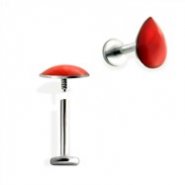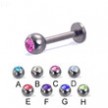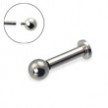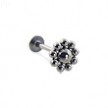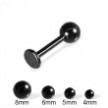Internally Threaded Red Tear Drop Labret, 16GA
- Gauge (Thickness): 16 (1.2mm)
- Color: red
- Material: 316L surgical grade stainless steel
- Type: labret
- -: priced and sold individually
- Threading Type: Internally Threaded
| Click on the picture to see a big picture and description of the body jewelry you are interested in. | |||||||||
|---|---|---|---|---|---|---|---|---|---|
|
Titanium jeweled labret, 14 ga
$9.49
Titanium jeweled labret, 14 ga
Shown: 10mm labret. |
Internally threaded labret, 10 ga
$9.49
Internally threaded labret, 10 ga
|
Flower labret, 16 ga
$4.99
Flower labret, 16 ga
shown: 10mm length |
Black labret with ball, 14 ga
$6.99
Black labret with ball, 14 ga
Shown: 10mm labret with 5mm ball. |
||||||
Annealing
The milling of stainless steel wire used in captive bead rings (not to be confused with bar stock that is used in barbells) work-hardens the wire to a point that it loses some of its corrosion resistance properties. It requires these properties to be considered implant grade.
Annealing is a process of heat treating metal. It involves heating steel to about one half of its melting point and cooling it in a controlled environment. Annealing stainless steel serves to produce changes in the physical condition, mechanical properties and residual stress levels of the metal. Specifically, the annealing process serves to reduce the corrosive tendencies of the work-hardened metal. During annealing, chromium carbides, which markedly decrease resistance to inter-granular corrosion, are dissolved. Annealing literally cleans up the metal.
We all know that annealed jewelry is easier to work with, and what we need to understand is that non-annealed jewelry might not be safe to use in piercings.
